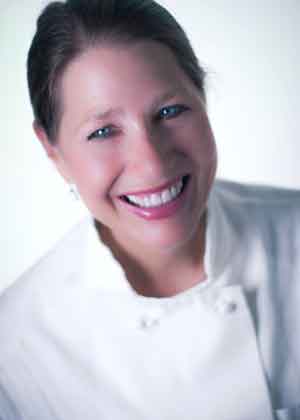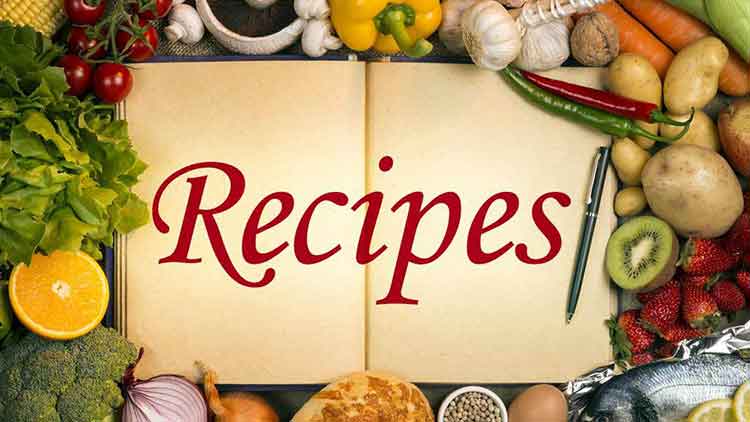Five years ago, Patricia K. Rose left her successful career in the magazine industry to pursue her passion for cooking and teaching.
Her culinary school education from 20 years ago played a role in her career change.
A Los Angeles resident, she is now a successful chef and cooking teacher whose food blog, Fresh Food in a Flash, contains a smorgasbord of delicious and easy-to-make recipes.
 Patricia pulls from the global traditions of the “grandma’s of old” and believes that we should cook with what is at our feet.
Patricia pulls from the global traditions of the “grandma’s of old” and believes that we should cook with what is at our feet.
With her finger on the pulse of the food world, she also sees our current younger generation of concerned consumers and budding chefs as a driving force to turn the way we eat back to the way it should be.
This inspiring educator wants to change the way that people eat. Wellness Warrior sat down with Patricia to discuss her story, her thoughts on good food, and how she is working to help people live healthier lives.
WW: In your Bio on Fresh Food in A Flash, you write, “Good food is easy to make once you learn a few tips and have a few essential kitchen tools like a good chef’s knife. I’m a fan of ingredients with one name on the label, like carrots.
It is my goal to help others create delicious and healthy meals in a flash. Fresh Food in a Flash.” Sounds great, but for many healthy and fast seems a lot harder than it sounds. Why is it important to you that you achieve these goals?
PR: Even with the popularity of cooking shows on TV, many people still either don’t know how or aren’t motivated to cook at home, which to me is a pity. They buy frozen or packaged meals or pay a lot for takeout. They want to eat fresh food, but they think it is too difficult to make themselves.
My classes demystify some of this. I try to show my students how easy and fun cooking can be. What’s wonderful about the food blog is that you can show the process. With a culinary school background, I know the techniques and the whys and hows, but it is not enough to show people. They must do it with their own hands before they get it.
WW: For many people, “healthy” is antithetical to “delicious.” How do you bring people around?
PR: Taste is most important. I don’t want to make food that might be healthy but tastes like cardboard. Everyone is pressed for time, so I take shortcuts and come up with recipes like my One-Minute Pizza Dough or the One Minute French Baguette Dough. For example, In my pizza class, I find the youngest or the least experienced person in the class and I have them demonstrate how to make the dough in a food processor, while I walk them through it. Everyone is amazed and so pleased that they can make fresh-made dough themselves … and they are so proud of their creations. Show how to make it with fresh ingredients and you’ve piqued their interest in creating more and cooking more. Get them hooked on fresh.
WW: What do you love about teaching people to cook?
PR: I believe you learn and get motivated by doing, so I get everyone involved. You can see pictures on my blog of people holding their dishes that they’ve made in class. That is the moment for me when I am so proud of these students. When they do it themselves, that’s when they get it … that’s when I know that there is a chance for them to go home and make more.
Every class has five teams and each team creates one recipe. I help each team to be successful and sometimes students make mistakes. Sometimes this is the best learning experience because I show them how to “rescue” the dish or alter it, based on the situation.
Students feel that the best part of a class is when we sit around the big table and share what we’ve made, have a glass of wine, and discuss what we’ve learned. Believe me, I learn as much from the students as they learn from me.
Sometimes I change the recipes from what I’ve learned. There is no right or wrong. I always say the team that is cooking the dish is the “boss” of that dish. I always say that if you give the same recipe to ten different people, you will get ten different dishes. That’s part of the joy of cooking.
WW: In a quote from an article about you in the Argonaut last year you said: “You learn so much about the history and why we eat the things we eat. I try to incorporate a little of that history into the class.” Why is the history of food important to you?
PR: I am inspired by simply looking at the raw ingredients. That’s when the juices start flowing for me, but it’s also based on the recipes that fill my library. Food history is important to my vision. These are the classic dishes that were made by the grandmas of old. They cooked with ingredients that grew at their feet and they didn’t waste a thing. That is how the classics—generally thought of as peasant food— were created. Italians had pastas and risottos. Indians, curry from their spices. Mexicans, chiles, and corn to make tortillas and moles. Today we can take the classics and play off them.
Take “Caesar Brussels Sprouts.” From the person who made Caesar Salad, and then down the line, there is not necessarily much that it is new; it is just different people making tweaks and changes to older recipes passed on from generation to generation. I see it as a historical lineage.
Now, though, we can make them quicker with modern equipment and techniques. Living in Los Angeles, I have access to all ingredients all year long in ethnic neighborhoods, but we are coming full circle to eating what’s at our feet.
More and more, we eat what’s in season and local, maybe incorporating ethnic ingredients like chiles and spices to change it up.
WW: To what do you attribute your success?
PR: I really look at cooking as play and having fun together. I think of my classes as a combination of education and entertainment and sharing with friends. At parties, people love to eat and talk, so let’s have a party and have cooking be part of the fun. That is how I treat my cooking classes. It shouldn’t be considered work.
WW: You’ve got your finger on the pulse of the food scene of California. Do you see any trends emerging?
PR: The Food Network and Celebrity Chef era we live in has inspired more young people to become chefs. It’s become respectable and glamorous to work in a restaurant, which in turn has made the food coming out of restaurants more creative. What we eat in restaurants eventually makes it to our plates at home. Young chefs are challenged to use raw, low cost, low-brow ingredients like Brussels Sprouts, kale and pigs ears. They can’t afford duck breast and foie gras.
The young educated people I meet want clean food. They buy artisan ingredients. They are demanding organic, local, non-GMO, antibiotic-free food. They’ve made it a priority.
They are not feeding a family of 4+ on a tight budget and can afford the higher prices. This will improve the larger supply of clean food and hopefully bring the price down as the supply becomes more mass. You can buy organic now in every market.
WW: What are your feelings about the current state of our food system, nationally or globally?
PR: I am mostly bothered by the bad eating habits of the masses. There are a lot of special diets out there, gluten-free, vegan, raw. That is not me. I have a bigger vision in mind! I want to reach the masses. People are drinking juice from a bottle instead of the fruit. People are eating tasteless energy bars instead of a 3-minute hummus you can make to spread on pita bread or a carrot. I’d like to think of packaged food like an orange or onion you need to peel that comes naturally in its own package.
I think of the grandma’s of old. They may have had gelatin, but they didn’t have green Jell-o, they didn’t have Kraft Mac N’ Cheese.
We’ve got to eliminate that junk from our diet and make the kind of food that our grandma’s made, and their grandma’s made. . .
WW: If there were one thing that you could change in the world, what would it be?
PR: Ending war. As part of that, if you break bread together, then there is no reason for conflict.
Read more about Patricia at Fresh Food in a Flash.
Patricia’s Recipe for Caesar Brussel Sprouts (check it out on her blog for her commentary and fabulous photos of the process)
“Caesar” Brussels Sprouts
1 pound Brussels sprouts
1 egg, soft cooked and chilled in ice water
1 large garlic clove
4 anchovies
2 Tbs lemon juice
1/8 tsp Worcestershire sauce
1 tsp grainy mustard
1/2 cup olive oil
1/4 cup grated pecorino
1 Tbs chives, snipped
3 radishes, thinly sliced
2 Tbs pickled red onion (optional) or pickled beet matchsticks
1 Tbs mint sprigs, for garnish
1 Tbs parsley, flat-leaf
- Trim Brussels sprouts, cut in half, and saute in a skillet with a little olive oil until browned. Set aside.
- While Sprouts are cooking, make the dressing. In a small food processor, process garlic first, then add anchovies, cooked egg, lemon juice, Worcestershire sauce, and mustard until the mixture is combined. Add in olive oil a drizzle at a time, until an emulsion forms. Set aside.
- Shave Brussels sprouts in the food processor with a slicing blade and add back to the skillet. Warm through and remove from heat. When ready to serve, add dressing and mix along with the pecorino cheese and chives. Plate into a salad, garnishing with the sliced radish, pickled red onion, and parsley/mint.
Servings: 6
207 calories per serving
